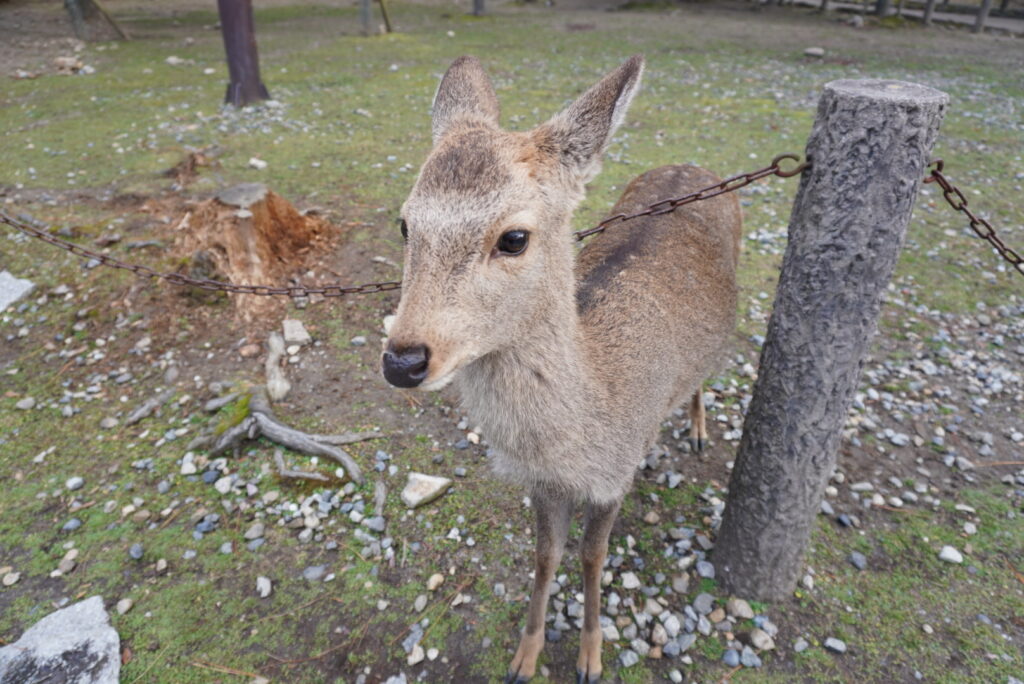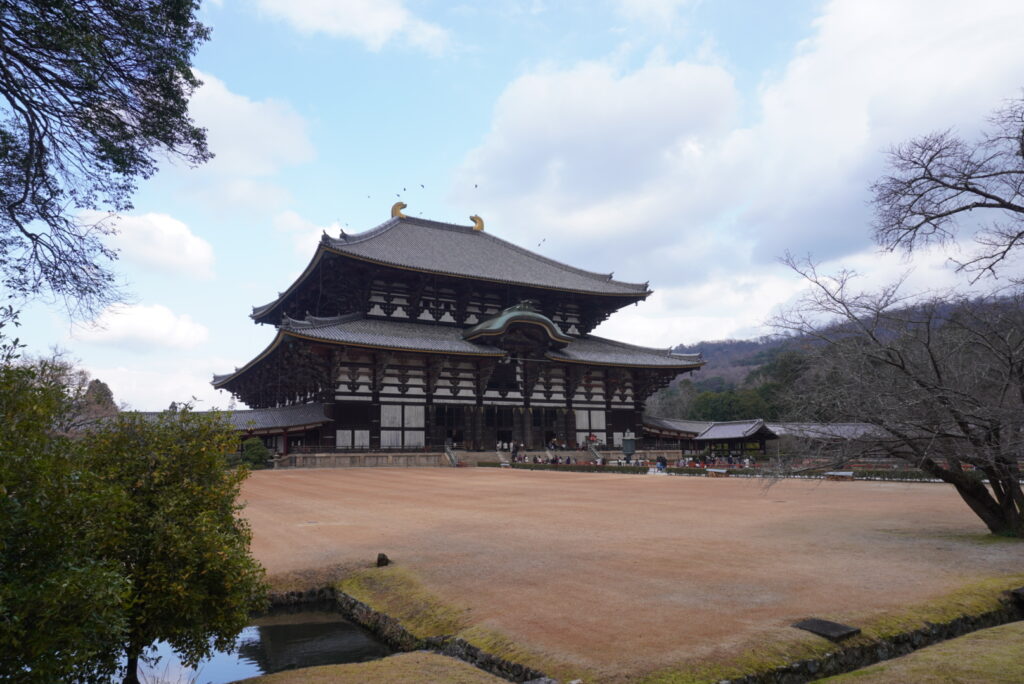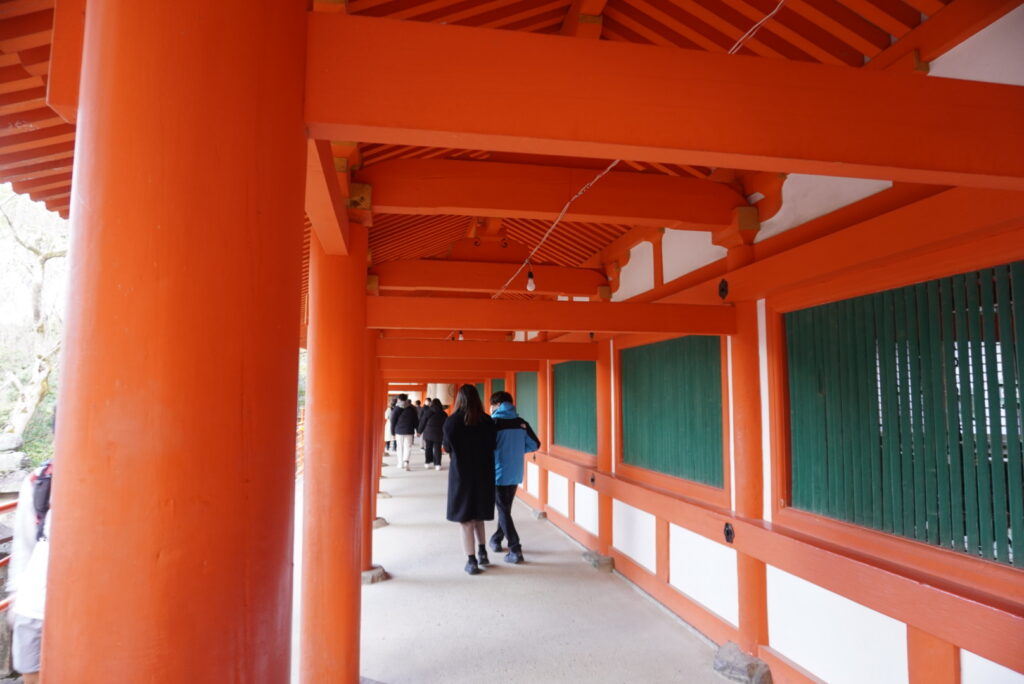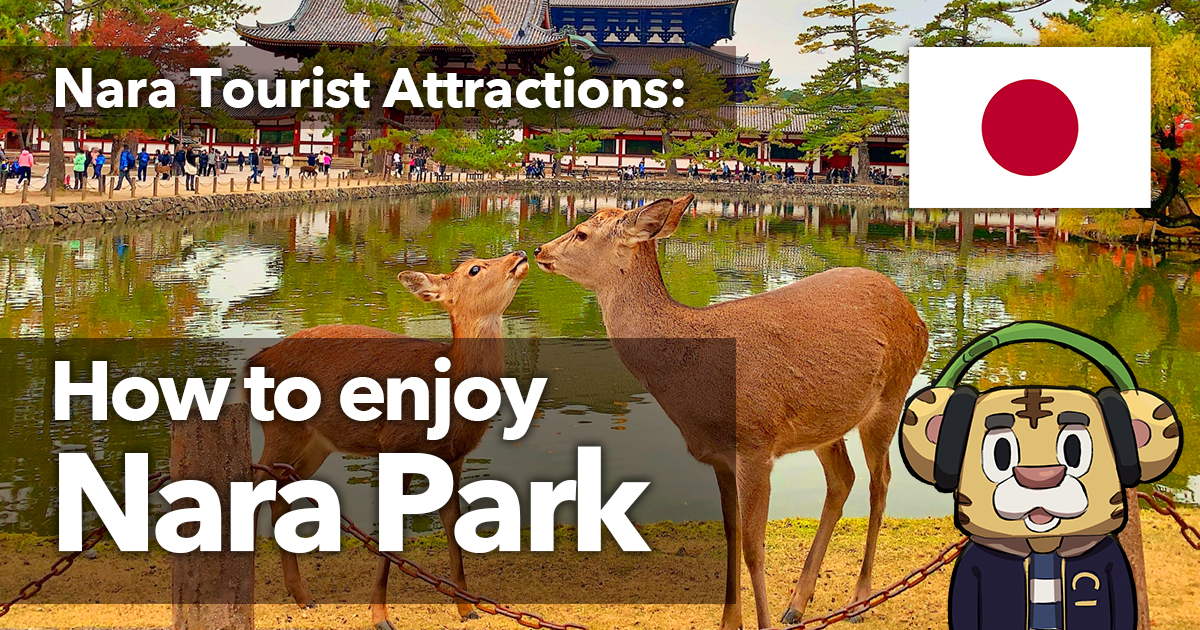Introduction

Nara Park is a vast urban park located in the center of Nara City and a popular tourist destination where visitors can enjoy the history and natural beauty of Japan. opened in 1880, Nara Park covers an area of approximately 500 hectares and is dotted with historical temples and shrines registered as World Heritage sites, including Todaiji Temple, Kofukuji Temple and Kasuga Taisha Shrine.
The main attraction of Nara Park is the approximately 1,200 deer that roam freely. The deer in Nara Park have long been cherished as messengers of the gods. Visitors can purchase a deer cracker to interact with the deer and be comforted by their adorable appearance. The park’s natural scenery is also a seasonal highlight, with cherry blossoms in full bloom in spring and autumn leaves beautifully decorating the park in fall.
Visitors can spend a pleasant time strolling through the vast lawns, ponds, and quiet forests of Nara Park. Furthermore, many benches and rest areas in the park provide a relaxing environment.
Nara Park, with its blend of historical buildings and abundant nature, is an enjoyable place for families, couples, and solo travelers. When visiting Nara, be sure to visit Nara Park and experience its charms to the fullest.
History and culture of tourist attractions
Historical Background
Nara Park is a historic city park located in the center of Nara City and was opened in 1880. The park is surrounded by World Heritage-listed temples and shrines such as Todaiji Temple, Kofukuji Temple, and Kasuga Taisha Shrine. These temples and shrines were built in the Nara period (710-794) and are deeply rooted in Japanese history and culture. With its rich historical background, Nara Park is a special place that gives visitors a sense of Japanese history.
Cultural Features
The greatest cultural feature of Nara Park is the approximately 1,200 deer that roam freely. These deer have long been cherished as “messengers of the gods. The deer are considered sacred messengers of Kasuga Taisha Shrine and are special to locals and tourists alike. Purchasing a deer cracker and feeding it to the deer is a popular activity for visitors to Nara Park.
Nara Park is dotted with numerous historical buildings. The Daibutsuden (Great Buddha Hall) at Todaiji Temple is the largest wooden structure in Japan, with a 15-meter-high statue of the Great Buddha inside. Kofukuji Temple, with its five-story pagoda, Nan’en-do Hall, and other important cultural properties, attracts visitors with its beautiful architecture. Kasuga Taisha Shrine is characterized by its beautiful vermilion-lacquered shrine pavilions and the primeval forest that stretches across its grounds, creating a sacred atmosphere in harmony with nature.
Nara Park is also a place where visitors can enjoy the beauty of nature in each of the four seasons. In spring, cherry blossoms are in full bloom, and in autumn, the leaves turn beautiful colors. The lush green scenery in summer and the snowy landscape in winter are also highlights of the park. Visitors can enjoy the scenery of each season as they stroll through the park.
Places to visit
Suggested times of year to visit
The best times to visit Nara Park are spring and autumn. In spring, the cherry blossoms are in full bloom and the entire park turns pink. The best time to visit is from the end of March to the beginning of April. In autumn, the leaves turn beautiful colors, and the best time to visit is from mid-November to early December. The weather is mild during these seasons, allowing visitors to enjoy sightseeing in comfort.
Major tourist attractions and popular places to visit
Todaiji Temple
Todaiji Temple is the most famous tourist attraction in Nara Park. The Daibutsuden (Great Buddha Hall), the largest wooden structure in Japan, houses the 15-meter-high Great Buddha (Rushanabutsu). Its grandeur overwhelms visitors. There are also numerous historical buildings scattered around the Daibutsuden that are worth seeing.

Kasuga Taisha Shrine
Kasuga Taisha is a shrine with beautiful vermilion-lacquered pavilions and is located in Nara Park. There are approximately 3,000 stone lanterns and 1,000 hanging lanterns, creating a fantastic sight, especially during the “Mantoro” festival in February and August. The Kasuga-yama Primeval Forest is also worth a visit.

Kofukuji Temple
Kofuku-ji Temple is located in Nara Park and features important cultural assets such as the five-story pagoda and Nan-endo Hall. The five-story pagoda is the second tallest pagoda in Japan and its beautiful appearance is a symbol of the park. The historical buildings and the quiet atmosphere are attractive.
Interacting with Deer
You should not miss the chance to interact with the deer that are the symbol of Nara Park. The experience of buying a deer cracker sold in the park and feeding it to the deer is especially popular. The deer are friendly and you can even take pictures of them up close.
Points to note at tourist attractions
When visiting Nara Park, please be aware of the following points:
- Crowded: It is very crowded, especially during the cherry blossom season in spring, the autumn foliage season in fall, weekends and holidays. Visit early in the morning or late in the evening on weekdays for a more relaxed sightseeing experience.
- Clothing: Since you will be walking in the large park, please wear comfortable shoes and dress according to the season. Light clothing in spring and fall, a hat and sunscreen in summer, and warmer clothing in winter are recommended.
- Manners: When feeding the deer, use only deer crackers and do not feed them any other food. Also, please be cautious with deer as they are wild animals and can be aggressive at times.
- Take your trash home: There are few trash cans in the park, so be sure to take your trash home with you.
Access
Access from Nara Station
Access to Nara Park from Nara Station is very convenient; the park is about a 20-minute walk from either JR Nara Station or Kintetsu Nara Station. From the station, you will be guided on a path to Nara Park, with Kofukuji Temple and a shopping area along the way, allowing you to take a stroll. If using a bus, take the city circular bus and get off at the “Daibutsuden/Kasuga Taisha-mae” bus stop. The bus ride takes about 10 minutes.
Access from Shin-Osaka Station
To get to Nara Park from Shin-Osaka Station, it is usually possible to use the JR or Kintetsu Railway. First, take the JR Tokaido Line from Shin-Osaka Station to Osaka Station, then transfer to the JR Yamatoji Rapid train and get off at Nara Station. The trip takes about one hour. Another route is to take the Midosuji Subway Line from Shin-Osaka Station and transfer to the JR Yamatoji Rapid at Tennoji Station. This also takes about one hour. From Nara Station, as mentioned above, you can access Nara Park on foot or by bus.
Access from Kansai International Airport
There are two ways to get to Nara Park from Kansai International Airport: by train or by bus. When using the train, take the Nankai Railway to “Namba Station”, then transfer to the Kintetsu Nara Line and get off at “Kintetsu Nara Station”. The journey takes about one and a half hours. From Kintetsu Nara Station, you can access Nara Park on foot or by bus. If using a bus, there is a direct limousine bus service from Kansai Airport to Nara, which takes about 1.5 hours to reach Nara Station. From Nara Station, as mentioned above, you can access Nara Park on foot or by bus.
Hours of Operation, Admission Fees
Business Hours
Nara Park itself is open 24 hours a day and visitors are free to explore at any time.
Summary

Nara Park is a vast urban park located in the center of Nara City, surrounded by World Heritage Sites such as Todaiji Temple, Kofukuji Temple, Kasuga Taisha Shrine, etc. Opened in 1880, the park covers an area of approximately 500 hectares. The main attraction of Nara Park is the approximately 1,200 deer that roam freely. The deer are cherished as messengers of the gods, and visitors can purchase deer crackers and interact with the deer.
The best times to visit Nara Park are spring and autumn. In spring, the cherry blossoms are in full bloom, and in autumn, the park is beautifully decorated with autumn leaves. The Daibutsuden (Great Buddha Hall) of Todaiji Temple, the vermilion-lacquered shrine pavilions of Kasuga Taisha Shrine, and the five-story pagoda of Kofukuji Temple are just a few of the highlights of the park. The Daibutsuden (Great Buddha Hall) of Todaiji Temple, in particular, houses a 15-meter-high statue of the Daibutsu (Great Buddha), whose grandeur overwhelms visitors.
Nara Park is a fascinating sightseeing spot that combines history and nature. Please enjoy the rich history and culture as well as the beautiful nature to the fullest.



